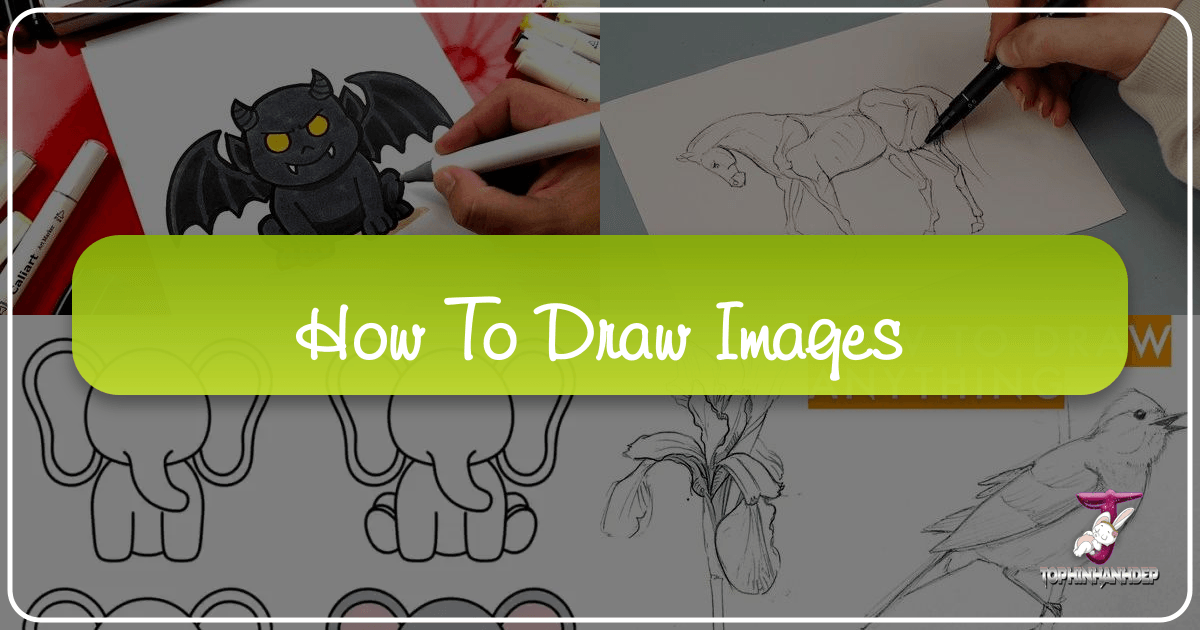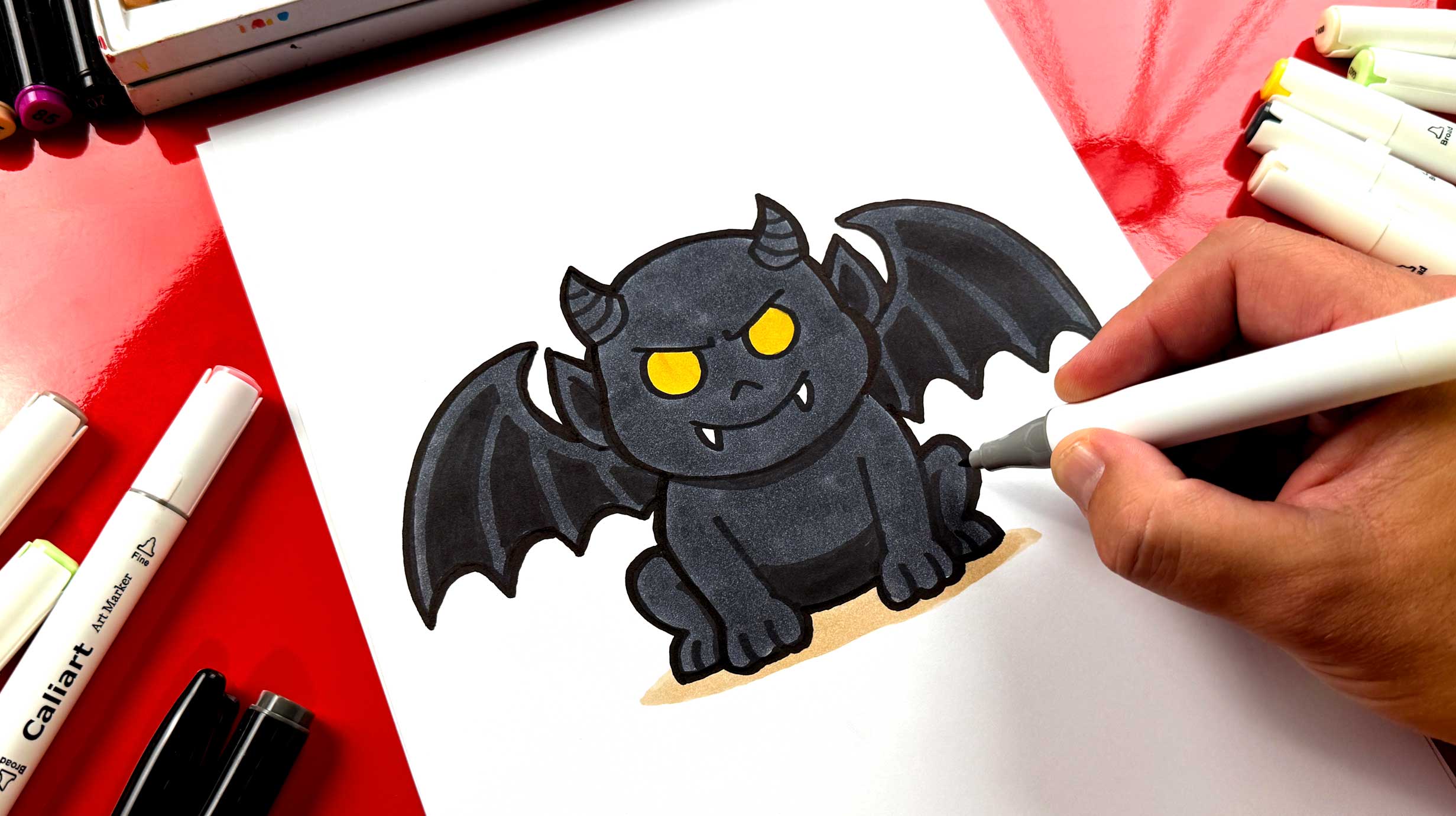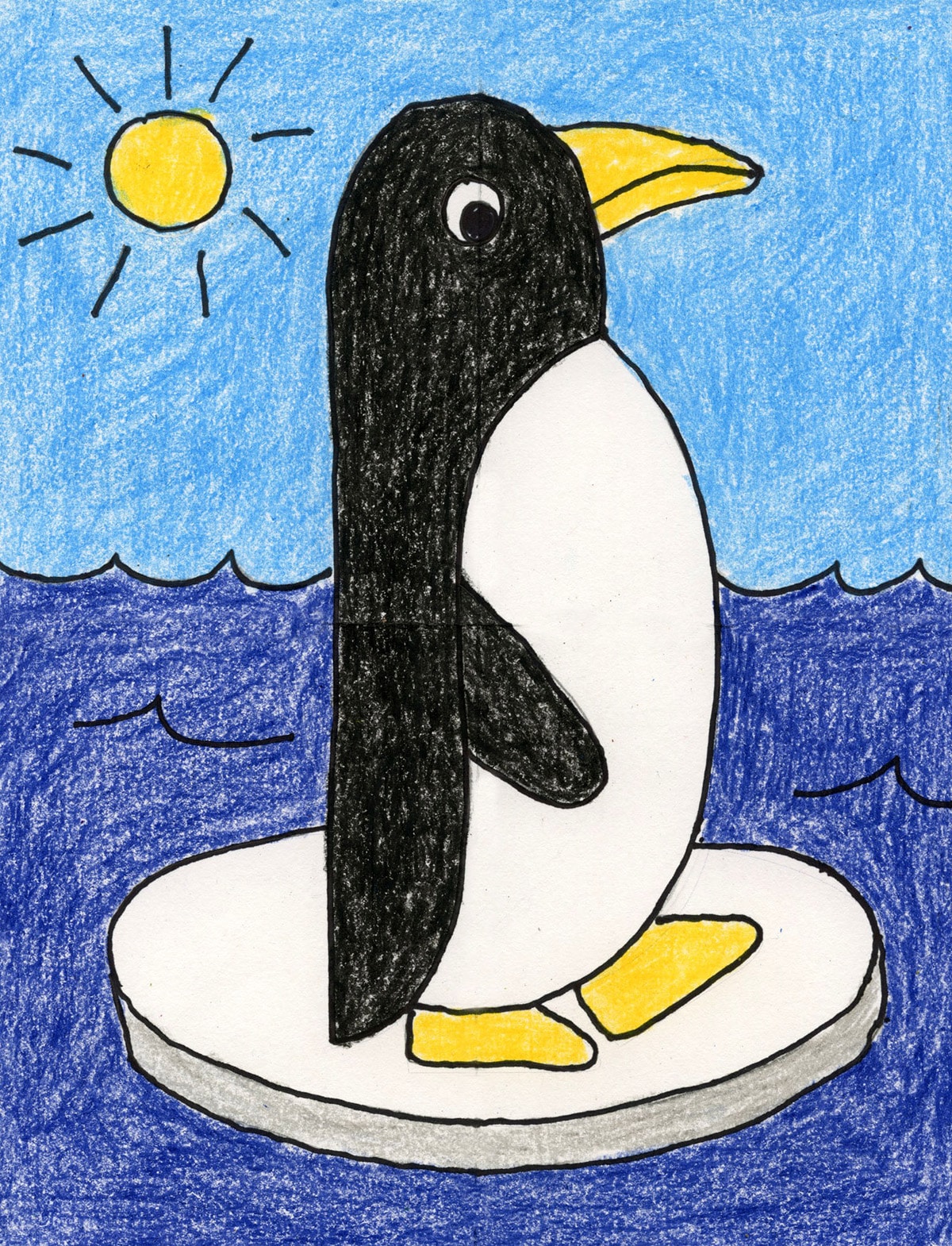Mastering the Art of Image Creation: A Comprehensive Guide to Drawing with Tophinhanhdep.com

Learning how to draw is a journey accessible to everyone, regardless of age or experience. From simple sketches to intricate masterpieces, the act of drawing is a fundamental form of visual expression, enabling us to translate imagination into tangible images. On Tophinhanhdep.com, we believe that understanding the principles of drawing is key to unlocking your creative potential and enriching your ability to craft captivating visuals. Whether you aspire to create stunning digital art, enhance your photography skills, or simply find a joyful outlet, this guide will walk you through essential techniques, diverse subjects, and how Tophinhanhdep.com’s resources can support your artistic endeavors.
Drawing isn’t just about putting a pencil to paper; it’s about developing an eye for detail, understanding light and shadow, and mastering the illusion of depth. It’s a foundational skill for all forms of visual design and a direct pathway to producing the “Images” that are central to Tophinhanhdep.com’s offerings—from aesthetic backgrounds and nature scenes to abstract compositions and emotional art. By delving into the art of drawing, you cultivate a unique perspective that informs and elevates all your creative pursuits.

The Foundations of Drawing: From Concept to Canvas
Every great drawing begins with a solid understanding of fundamental techniques. These building blocks are crucial for rendering anything from a simple doodle to a complex scene with realism and emotion. Tophinhanhdep.com aims to demystify these core concepts, making them approachable for artists at any stage.
Essential Techniques for Every Aspiring Artist
The very first step in drawing is to become comfortable with your tools and the marks you make. Starting with basic lines and curves is not as simple as it seems, but it’s where coordination and control begin to develop. Hold your pencil at different angles, using your whole arm for smoother, straighter lines rather than just your wrist. Practice a variety of lines—short, long, thick, thin, wavy, zig-zag, and even tangled scribbles. This helps you build muscle memory and confidence. Once lines feel natural, progress to simple two-dimensional shapes like circles, squares, and triangles, filling pages to reinforce your understanding of their forms.

Beyond mere outlines, giving your drawings a sense of reality requires understanding how light interacts with objects. This is where shading becomes indispensable. Draw a basic shape, like a sphere, and imagine a singular light source. The areas furthest from this light source will be the darkest, gradually fading to the lightest areas closest to the light. Use your pencil to build up layers of tone, creating a smooth gradient from dark to light. Techniques like cross-hatching (parallel lines intersecting) and stippling (dots) can add texture and dimension, contributing significantly to the “Aesthetic” and “Digital Art” categories on Tophinhanhdep.com by making your creations visually rich.
To further ground your drawn objects in their environment, you need to master cast shadows. These are the shadows an object projects onto a surface, opposite its light source. The shape of the cast shadow often mirrors the object but can be elongated or shortened depending on the light’s distance and angle. Blurring the edges of these shadows with your finger, an eraser, or a blending stump will give them a more natural, realistic appearance. This attention to detail can transform a flat drawing into a scene with palpable depth, ideal for creating realistic “Backgrounds” or “Nature” images.

Crafting Form and Dimension: Shading and Perspective
When tackling more complex compositions or aiming for precise proportions, tools and techniques like the grid method are incredibly helpful. If you’re working from a reference image, overlaying a grid of evenly-spaced horizontal and vertical lines onto both your source and your drawing paper allows you to tackle the image square by square. This breaks down overwhelming details into manageable sections, ensuring your reproduction is accurate and proportionate. This method is invaluable for artists creating “High Resolution” images or working with “Stock Photos” as references, ensuring fidelity to the original.
A crucial concept in creating believable “Images” is perspective. Perspective is the art of representing three-dimensional objects on a two-dimensional surface so that they appear to have depth and distance. Start with a simple exercise: draw a horizon line across your page and place a single “vanishing point” on it. Then, draw lines converging towards this point. Objects appear larger when closer to the viewer and smaller as they recede towards the vanishing point. Mastering one, two, or even three-point perspective allows you to construct environments, buildings, and objects that feel real and occupy space, vital for “Visual Design” and immersive “Digital Art.”
Finally, building complex objects becomes manageable by breaking them down into simpler shapes. Observe any object—a car, an animal, or a human figure—and identify the basic geometric forms that compose it (cylinders, cubes, spheres). Sketch these underlying shapes first, then connect them with lines, gradually refining the details. This “skeleton” approach, followed by shading and the addition of intricate features, ensures a harmonious and balanced final piece. Remember, always start with loose outlines and basic values, only adding fine details and intricate patterns once the overall structure is satisfactory. This iterative process prevents disproportion and maintains overall balance, leading to truly “Beautiful Photography” in artistic output.
Bringing Vision to Life: Capturing Diverse Subjects
With foundational techniques under your belt, the world becomes your canvas. Tophinhanhdep.com encourages artists to explore a wide array of subjects, translating their inspirations into unique “Images.”
Depicting the Human Form and Beyond
Drawing people and faces can seem daunting, but like all drawing, it’s a process of simplification and progressive detail. For faces, begin with an upside-down egg shape, slightly wider at the top, and lightly sketch intersecting vertical and horizontal lines to guide your features. Eyes align with the horizontal line, the nose sits between the eyes and chin, and the mouth on a line halfway between the nose and chin. Ears typically align with the eyebrows and the bottom of the nose. These guidelines, which are erased later, are key to balanced proportions and achieving an expressive “Sad/Emotional” or “Aesthetic” portrait.
For full figures, start with basic anatomical shapes. A circle for the skull, a trapezoid for the jaw, a rounded rectangle for the torso, and an oval for the hips establish the core structure. Limbs can be initially represented by simple lines and circles for joints (shoulders, elbows, knees, wrists). This “stick figure” approach allows you to capture poses and movement quickly. Gesture drawings, quick sketches focusing on the action and flow of a pose rather than precise detail, are excellent exercises for conveying dynamism. As seen in popular drawing tutorials like “How to Draw Michael Jordan” or “How to Draw Wednesday Addams” available on various platforms, the method focuses on capturing the essence of the subject before refining the details. Once the basic form is established, you can flesh out the limbs, add clothing, hair, and other defining features, bringing characters like a “Dancing Baby” or even a “Cyber Lion” to life.
Exploring Nature and Whimsical Creations
Nature offers boundless inspiration for drawing. Whether you’re drawing a vibrant “Nature” wallpaper or a serene landscape, a reference photo or direct observation is invaluable. Start with a horizon line to separate land from sky, strategically placed to optimize the visual interest according to the rule of thirds. Introduce a focal point—a majestic tree, a winding river, or an intriguing rock formation—to guide the viewer’s eye. Employ perspective to ensure objects in the foreground appear larger and more detailed than those receding into the distance. Resist the urge to draw every leaf or blade of grass; instead, simplify details and use textural lines to suggest foliage, water, or ground, allowing your “Creative Ideas” to shine through. Examples like drawing a “Bear With Apples For Fall” or a “Fall Goose” inspire thematic seasonal art.
Beyond realism, drawing provides a fantastic outlet for fantasy and playful creations. Still lifes, though static, are excellent for practicing observation and rendering everyday objects like a “Funny Bento Box” or a “Unicorn Popsicle.” For those with a playful style, cartoon drawing opens doors to exaggerated expressions and whimsical narratives. Tophinhanhdep.com’s “Image Inspiration & Collections” features a wealth of “Photo Ideas” and “Mood Boards” that can spark ideas for fantastical creatures or humorous scenarios. Imagine drawing a “Cyber Butterfly” or a “Cute Axolotl Mermaid,” blending nature with technology and myth. Animal drawings, whether realistic or cartoonish like an “Easy Penguin Drawing” or “How to Draw an Elephant,” are perfect for practicing details and expressing personality. Focusing on notable features for cartoon animals or light and shadow for realistic depictions allows you to create a diverse range of “Images.”
Enhancing Your Art in the Digital Age
In today’s interconnected world, the traditional art of drawing seamlessly merges with digital tools and platforms. Tophinhanhdep.com not only guides you through the drawing process but also offers solutions for integrating your art into the digital realm and finding endless inspiration.
Leveraging Tophinhanhdep.com’s Image Tools for Artists
Once you’ve created your hand-drawn masterpieces, Tophinhanhdep.com provides a suite of “Image Tools” to refine, optimize, and share your work. If you’ve scanned your drawings, our Image Converters can transform them into various formats suitable for web or print. Compressors and Optimizers are essential for reducing file sizes without compromising quality, making your artwork load faster on websites or shareable across platforms without hassle.
For artists looking to elevate their sketches or low-resolution scans, Tophinhanhdep.com’s AI Upscalers are game-changers. These advanced tools can intelligently increase the resolution of your drawings, sharpening details and making them suitable for larger prints or “High Resolution” digital displays. Imagine taking a simple pencil sketch and transforming it into a crisp, detailed image ready to become a “Wallpaper” or part of a “Thematic Collection.” Our “Image-to-Text” tools can also be useful for transcribing notes or descriptions accompanying your artwork, making your creative process more organized.
These tools empower you to bridge the gap between traditional drawing and “Digital Photography,” allowing your unique artistic voice to resonate across all visual mediums. They provide the practical backbone for “Visual Design” projects, from creating “Graphic Design” elements to preparing images for “Photo Manipulation.”
Finding Endless Inspiration and Creative Ideas
Tophinhanhdep.com is designed to be a wellspring of “Image Inspiration & Collections.” Our platform curates “Photo Ideas,” “Mood Boards,” and “Trending Styles” to continually fuel your imagination. Whether you’re interested in “Nature” motifs, “Abstract” forms, or capturing the essence of “Sad/Emotional” or “Beautiful Photography,” our collections can spark new drawing projects. From “Cyber Bees” to “Highland Cows,” the breadth of subjects explored in various tutorials, some of which demonstrate drawing animals and even historical figures like “The Liberty Bell With Cute Face,” underscores the vast possibilities for artistic exploration.
The process of learning to draw is not just about mastering techniques; it’s about cultivating a mindset of observation, experimentation, and continuous improvement. Embrace the iterative nature of art, where every sketch, every line, and every shade contributes to your growth as an artist. Tophinhanhdep.com encourages you to personalize every drawing, whether it’s adding “glowing patterns” to a cyber creature or unique designs to an Easter egg. The goal is to make the art your own, reflecting your individual “Creative Ideas” and vision.
In conclusion, drawing is a universal language, a potent tool for expression, and an endlessly rewarding skill to develop. By leveraging the comprehensive guides and innovative tools on Tophinhanhdep.com, you can embark on an exciting artistic journey, transforming your ideas into stunning images that captivate and inspire. So grab your pencils, open your sketchbook, and let Tophinhanhdep.com be your companion in mastering the art of image creation.